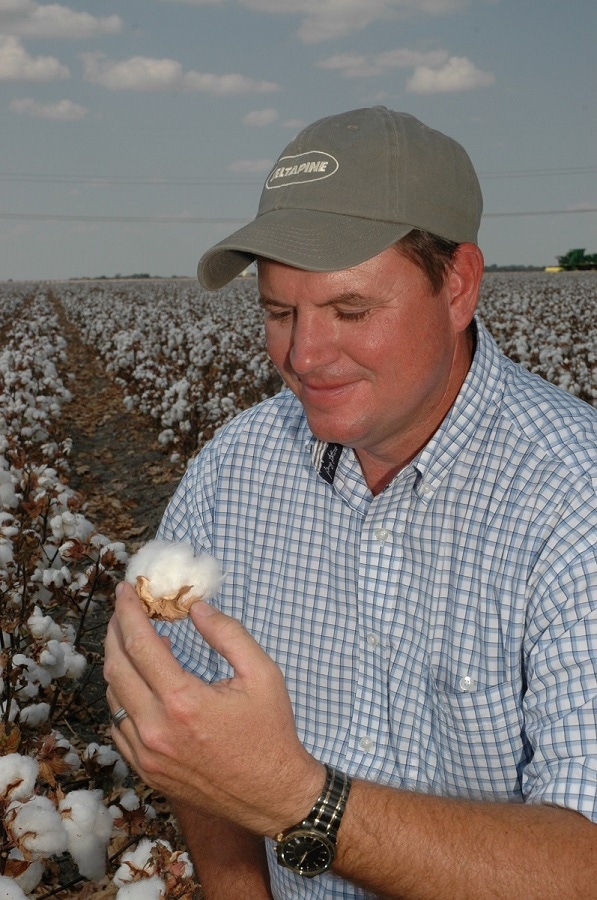
From West Texas to eastern Virginia, cotton farmers report 2015 production as “awful” to “decent,” depending on weather, particularly rain — lack of it, abundance of it, and when it fell.
A few of the some 140 growers attending Deltapine’s annual New Product Evaluator (NPE) Summit in San Antonio opened up about what was an unusual year for cotton production. NPE growers test Deltapine varieties on large-acre plots, and their input helps the company decide which lines to commercialize.
Steven Beakley, Ennis, Texas, says “2015 was an awful year” for cotton in the Texas Blacklands. “We had to replant following heavy rains in the spring, and then it turned dry, and then it got wet again at harvest. If we had gotten a rain in August, we would have made an okay crop.”
It was an expensive crop to make, too. Wet conditions early resulted in increased weed pressure. “We had to spray and spray again just to keep the fields clean,” Beakley says.
For the latest on southwest agriculture, please check out Southwest Farm Press Daily and receive the latest news right to your inbox.
Glen Lyon, Morton, Texas, out on the western edge of the state near New Mexico, says he made a “pretty good crop. It would have been better if we had gotten rain in August. Grades have been good.”
He irrigates about half his cotton acreage and has added corn as a rotation crop. “I like corn because of the residue I get,” he says. That corn stover helps hold moisture and limits soil loss, especially from wind erosion that’s common on the Southern Plains.
Keeff Felty, Altus, Okla., says cotton in Southwest Oklahoma was good, “the best we’ve made in the last four or five years. We had adequate rainfall.” Heavy rains beginning in late spring reversed a four-year drought that had depleted Lake Lugert to about 11 percent of normal. The lake, which supplies irrigation to area cropland, is now about 80 percent full.
WATER ISSUES
Louisiana growers say they had water issues similar to those in central Texas — rain early, a dry summer, and rain again at harvest.
Clegg Griggs, Unadilla, Ga., made “a fairly good crop. We had some water issues,” he says. In early December, he had about 1,000 acres left to harvest. “So far we have a good crop and good quality fiber. We just finished picking the irrigated acreage and we were very pleased with yields.” He says he will plant about the same cotton acreage in 2016.
Kirk Jones, Windsor, Va., says as bad as the crop was in his area, it “wasn’t as bad as south of me, down in North and South Carolina.” Those areas were devastated by an October storm surge that caused severe flooding across most of the Coastal Plains area and as far inland as Columbia, S.C.
“We have some decent cotton,” Jones says. “North of Hwy. 460 we’ve seen better cotton. We started off with good soil moisture and good conditions to get cotton up and out of the ground. I think every seed came up. In mid-July, we had a good boll load. We actually had more of a top crop than a bottom crop.”
HEAVY RAINS FROM HURRICANE
July turned dry, with a few timely rains, but Jones says double-crop beans and cotton started to suffer a little in August. “It didn’t rain until the end of August — and then the rain never stopped. We were defoliating when Hurricane Juaquin hit. We thought we would be okay and the storm would move out before the bolls cracked.” It did not.
“We were set up by July 15 to make a crop similar to the one we made in 2014, a great year for Virginia and North Carolina cotton, a 1,400-pound dryland yield. It made 711 this year. And quality is terrible.”
Adding insult to all manner of injury, low prices also made turning a profit more difficult than has been the case in recent years, and all that in the context of a new farm bill that leaves cotton a non-included commodity. Increased production costs, especially from added herbicide applications, additional tillage and hoe hand expense to control herbicide-resistant weeds, put profitable cotton even further out of reach.
Despite the problems, however, most producers at the NPE Summit remain committed to cotton and see at least a tad of silver on the backside of the dark clouds. They likely will start off 2016 with ample soil moisture to germinate the crop.
About the Author(s)
You May Also Like






